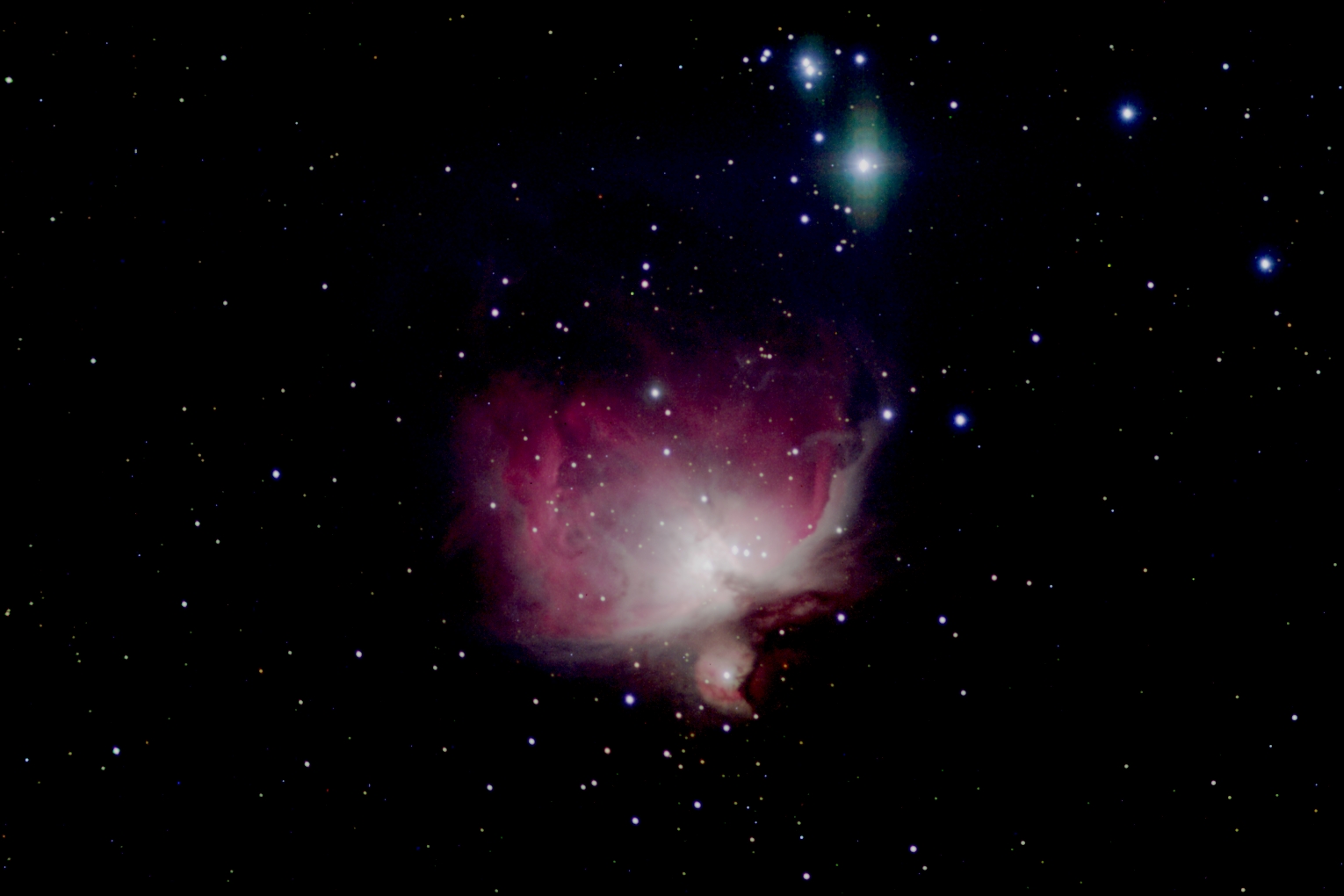
The images are not cropped or resized - they are at their full resolution. If you are using Internet Explorere, I'd recommend that you hit F11 now to "full" your browser and minimize the amount of scrolling around you will need to do.
The following two images were taken with my Stellarvue Nighthawk, a 78mm F6.5 achromatic refractor. I use a Sirius Optics MV1 to knock down the blue fringing. They were all shot with a SBIG ST-8 with the whole thing mounted on my AP900 GTO mount.

M42 (above) is such a bright, incredible object that there are dozens of ways of processing the image. I'm kind of fond of this "seat of God", surreal look. This was 25 minutes red, 20 minutes green, and 45 minutes of blue exposure.

One of my favourite visual sites, the Pleaides and its associated Merope Nebula is actually quite a hard object to shoot, as the bright stars tend to blow out the image. The image above isn't perfect for a number of reasons, but it is fairly astetically pleasing.
The next images were taken with my 10" Meade LXD55 Schmidt Newtonian.
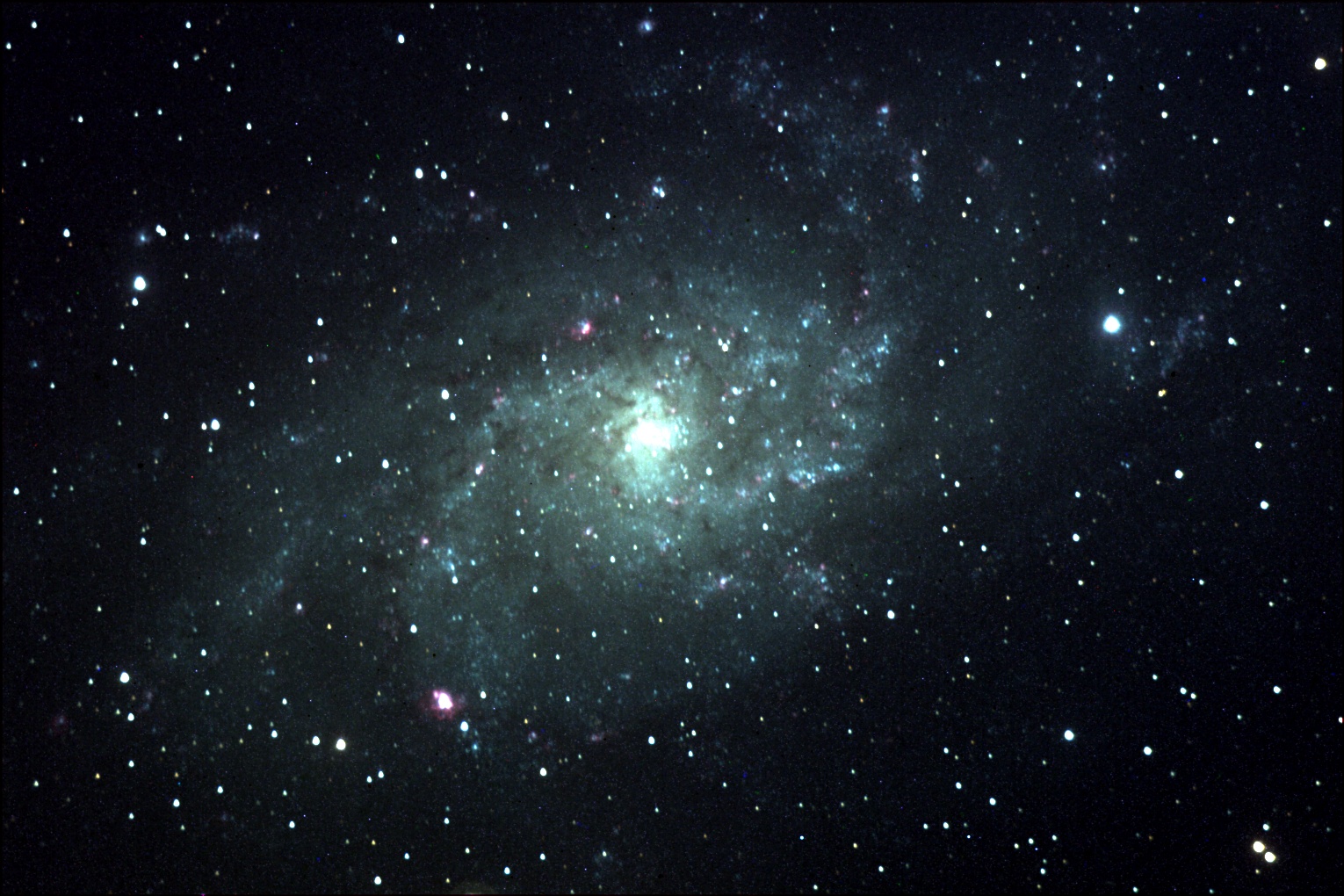
Messier 33 (above) is one of the more fun objects in the sky to shoot. It nicely fits the field of my Schmidt Newt, and is bright enough with enough detail to be exciting. I especially like the star formation areas (red) in the spiral arms.
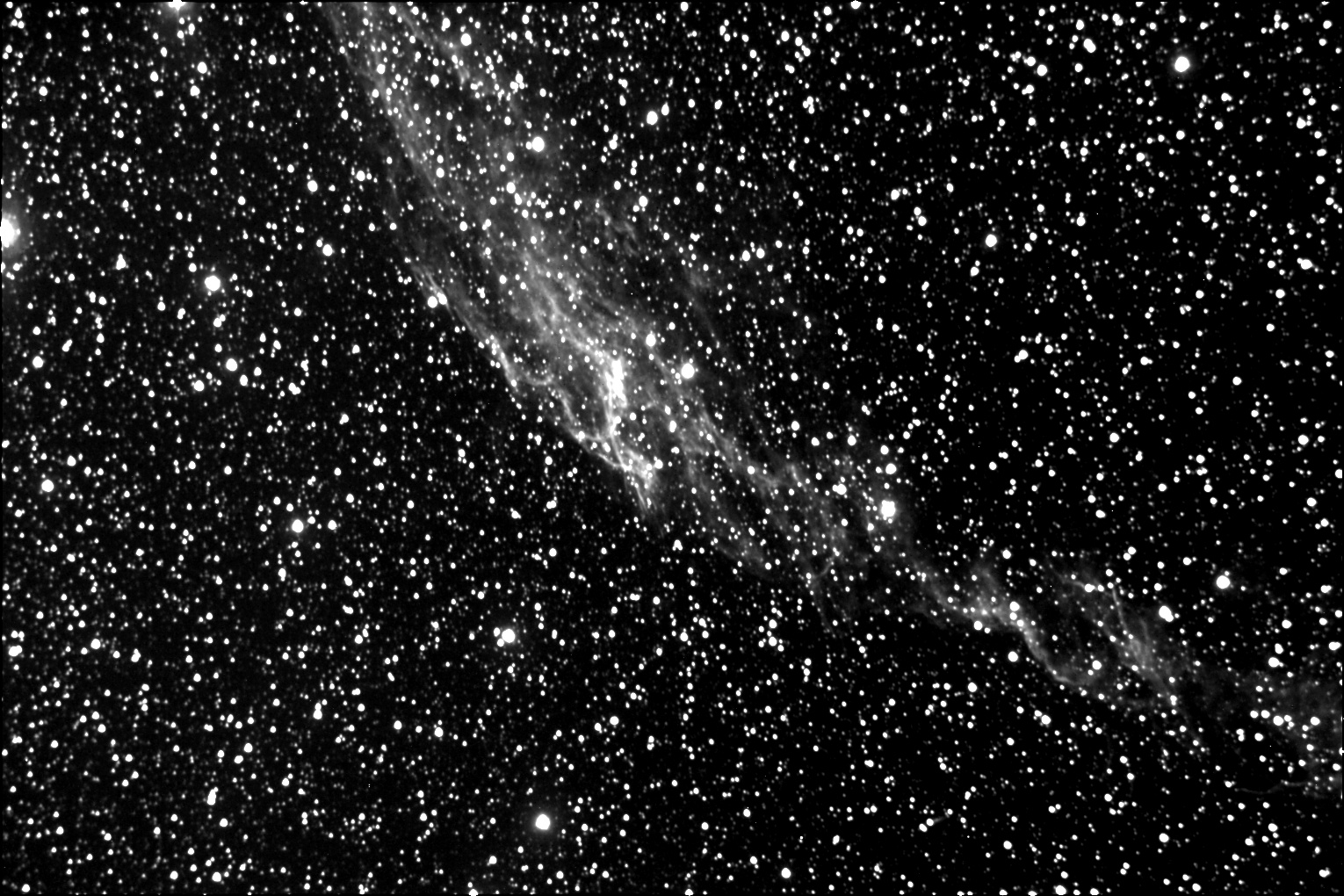
Science Fiction is cool. Reality can be cooler. The Network Nebula above is part of the shell of a supernova remnant. You can actually trace the nebulosity around for pretty much a complete circle.
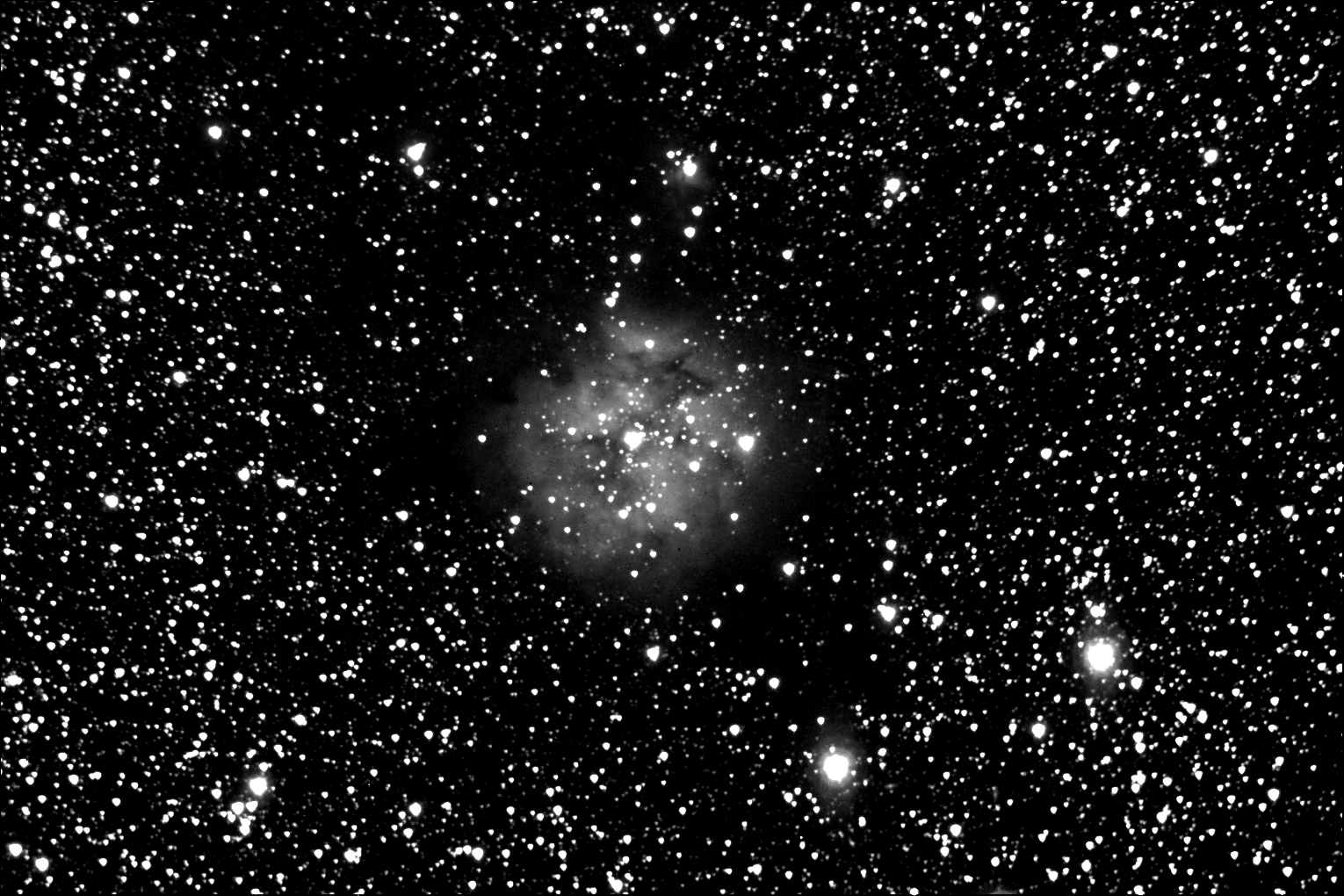
The Cocoon Nebula (above) is a tricky object to shoot with very low surface brightness. The above is 2 hours of exposure. (black and white).
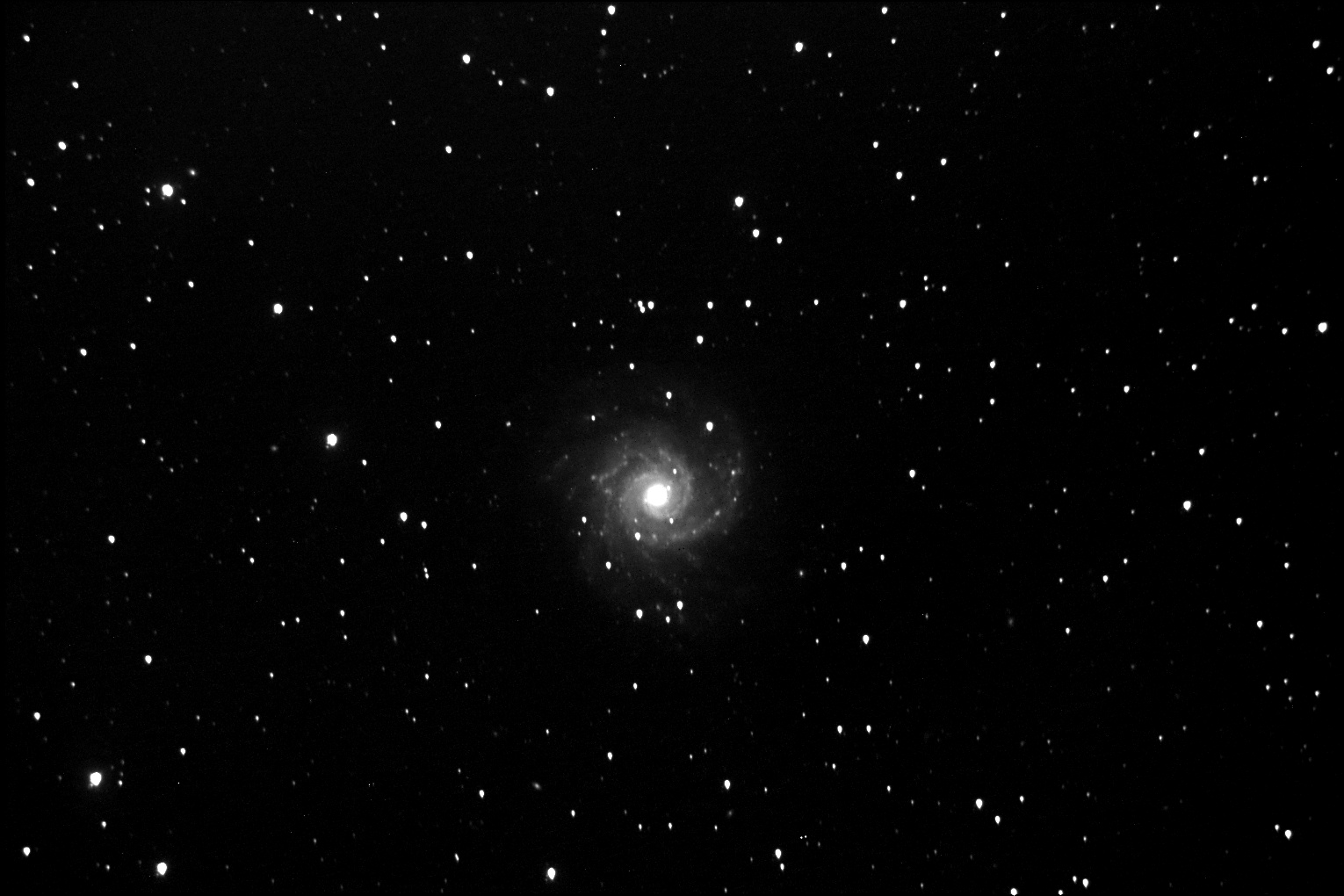
M74 is a nice little spiral galaxy. One of the dimmer Messier object. The non-round stars are not tracking errors. They are the symptoms of a miscolimate optical system (as I discovered later...).